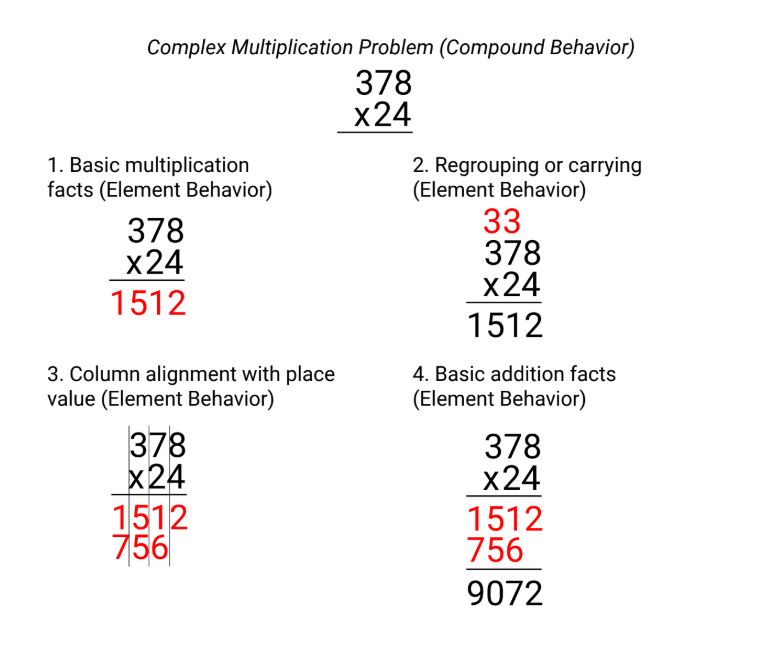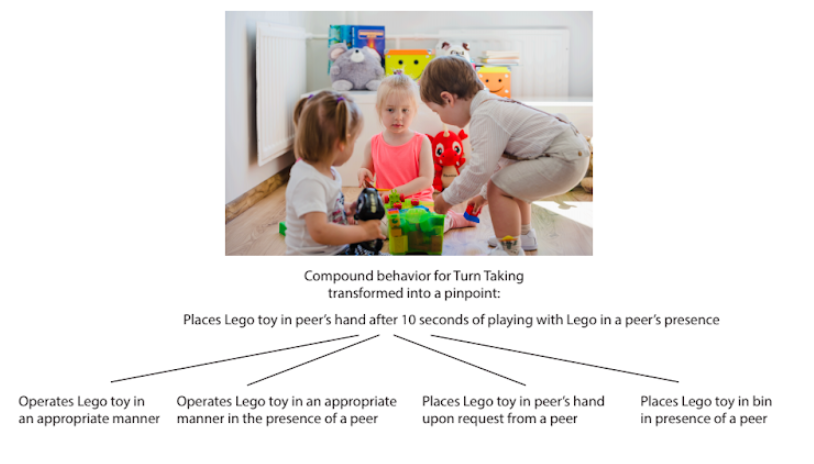The branch of science known as chemistry focuses on identifying the properties of substances and how they interact, change, and combine. For example, sodium (Na) and chloride (Cl) come together and form a compound we all know as salt (NaCl). Chemistry has grown and sheds light on processes that people once thought of as magic.
Behavior analysis, the branch of science that examines behavior, has also made remarkable discoveries that explain how the complexities of behavior emerge. Some of the processes that produce novel behavior appear straightforward, such as imitation. Person one sees person two doing something and imitates their behavior. Now, person one has a new behavior in their repertoire.
More complex processes explaining intricate, generative behavior include stimulus equivalence. With stimulus equivalence, people learn a series of discriminations and some discriminations become related without direct teaching. For example, a child hears the spoken word plane (stimulus A) and has paired it with the written word plane (stimulus B). Also, the written word plane (stimulus B) becomes paired with a toy plane (stimulus C). Then upon hearing the word plane (stimulus A) the child successfully touches the toy plane (stimulus C). The remarkable derived relation of stimulus A to C demonstrates equivalency.
A less well-known method for analyzing and fostering the emergence of complex behavior comes from Precision Teaching and goes by the name “element-compound analysis” (aka component-composite analysis).
Behavioral Elements and Compounds
Chemistry’s core discovery of elements forming a compound also applies to behavior. A behavioral element refers to a behavior that forms a constituent part of a compound behavior. For example, balling one’s fist serves as an element of throwing a punch.
A complex multiplication problem serves as another example of a compound behavior with several behavioral elements. Figure 1. below shows a complex multiplication problem that requires a long multiplication algorithm (also called grade school multiplication or the standard algorithm). A person who applies the long multiplication algorithm must have the ability to 1) calculate basic multiplication facts (single digit x single digit), 2) regroup or carry numbers in the tens place, 3) adhere to place value for the alignment of numbers in the problem, and 4) complete basic addition facts.

Figure 1. A compound behavior and the subsequent element behaviors.
Many complex, compound behaviors will not form without the elements occurring at a level of competency. Trying to apply a reinforcement contingency to the complex multiplication algorithm as above can result in a spectacular failure. For example, if a student attempts a reinforcement strategy for the long multiplication algorithm but does not possess a minimum behavioral dexterity with basic multiplication facts, they will likely fail. Many educational and behavioral developments benefit from the analysis of the elements within a compound behavior.
Element-Compound Analysis
Figure 2 presents a checklist from The Precision Teaching Implementation Manual for determining which elements comprise a behavioral compound.

Figure 2. A checklist for the element-compound analysis.
Step 1. The behavior change agent will first look for the targeted compound behavior in a curriculum, assessment (e.g., PEAK: Relational Training System, VB-MAPP), or a single behavior. Selecting the target can stem from a number of reasons (e.g., person needs to learn the behavior quickly, person has struggled learning the behavior).
Take the example of an important skill found in the PEAK: Relational Training System book Direct Training Module – Turn Taking. The goal of turn taking specifies the person’s offer to give a turn to another person during a game or toy play.
Step 2. Transforming the compound to a pinpoint+ helps bring precision to the target. Turn taking transformed into a pinpoint becomes:
Places Lego toy in peer’s hand after 10 seconds of playing with Lego toy in peer’s presence.
The previous pinpoint shows the child will give a turn to a peer with a toy after 10 seconds of play. The specificity with the pinpoint clearly communicates that the target behavior includes giving a toy to a peer.
Step 3. The turn-taking pinpoint may have several elements. Figure 3 displays a few important behavioral elements that must occur for the compound behavior. Giving a turn to a peer means the child must value and operate or play with the toy in the first place. Another element pinpoint has the child playing with the toy in the presence of another child or peer. Before a child can give a turn with a toy, having another child next to them forms an important element.

Figure 3. A compound behavior and the subsequent element behaviors.
The other two behavioral elements encompass placing the Lego toy in different locations. One behavior, “Places Lego toy in bin in presence of peer” demonstrates the target child can place the Lego in a place. Also, placing the toy in the hand of peer who requests its shows the target child can relinquish the item.
An analysis may reveal the need for additional elements. Also, some specific element(s) may require further sub-elements themselves. A list of what elements constitute behaviors does not exist at present, therefore the analysis falls on the shoulders of the behavior change agent.
Step 3a. All behaviors have a frequency at which the skill becomes functional. For example, “keyboards word while composing an email” becomes functional in the environment at 60 to 90 words keyboarded correctly with 0 to 1 incorrectly keyboarded words in one minute.
In the previous example the compound behavior and the element behaviors would likely happen during toy play and have a low frequency. Still, when teaching a specific pinpoint, a contrived situation could have a higher frequency with which to judge if the target child’s behavior has reached a functional criteria.
“Place Lego toy in peer’s hand upon request from peer” could look like a game itself whereby the target child must place a toy in the hand of the peer each time they hear the request. The event could take 3 minutes resulting in a frequency indicative of the aim or goal.
Step 3b. Behavioral elements may take on order for teaching. In Figure 3, for instance, teaching “operates a Lego toy in an appropriate manner” would take place before “operates a Lego toy in an appropriate manner in the presence of a peer.”
Step 4. The child learning the element pinpoints requires assessment for the compound behavior (i.e., pinpoint). Sometimes the compound behavior appears spontaneously, which exemplifies generativity. Other times the compound will not emerge until achieving minimum frequencies with all selected element behaviors.
Step 4a. Because so many behaviors of interest do not have readily broken down elements, behavior change agents will find themselves making modifications. First, changes may occur with the frequency ranges of element behaviors. The element behavior may need to be adjusted up or down depending on how well the element works when applied to the compound behavior. Second, the addition or deletion of element behaviors may also require implementation. If the presence of elements do not appear conducive to the emergence of the compound behavior, the behavior change agent may have missed a critical element.
Conclusion
The science of behavior offers a number of concepts that explain the emergence of novel behavior and generativity. The element-compound analysis serves as a method that may foster generativity but can also shine a light on instances when a person plateaus or cannot learn a certain behavior. The discovery of behavioral elements and their respective compounds illustrates the value and efficacy of behavior analysis to complex skills.
About the Author

Richard M. Kubina Jr., Ph.D., BCBA-D is a Professor of Special Education at The Pennsylvania State University and teaches courses on methods for teaching reading, behavior analysis, and experimental design. Rick conducts wide-ranging research in the area of Applied Behavior Analysis and Precision Teaching. He also served as the editor of the Journal of Precision Teaching and Celeration. Rick has dedicated his professional career to helping behavior change agents such as teachers, behavior analysts, and other helping professionals efficiently change behavior through effective teaching and measurement such as Precision Teaching. Rick co-founded a software called Chartlytics. Chartlytics merged with CentralReach where Rick has assumed the role of Director of Research. At CentralReach, Rick explores how technology can accelerate superior outcomes for all those seeking to engender professional and personal success.



